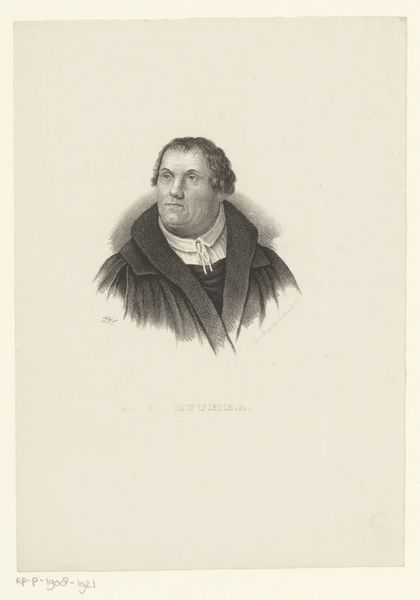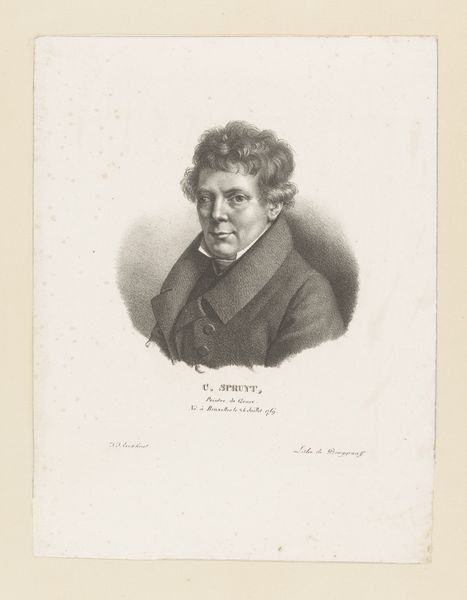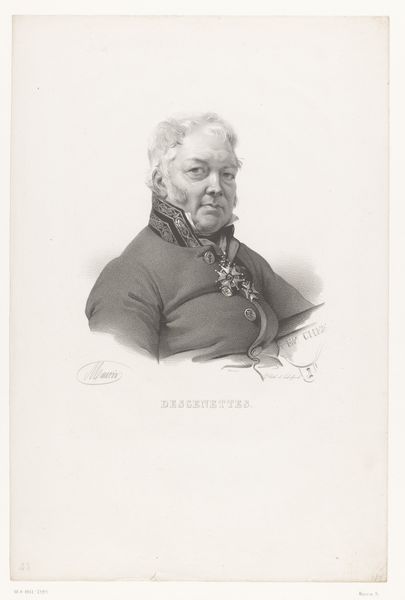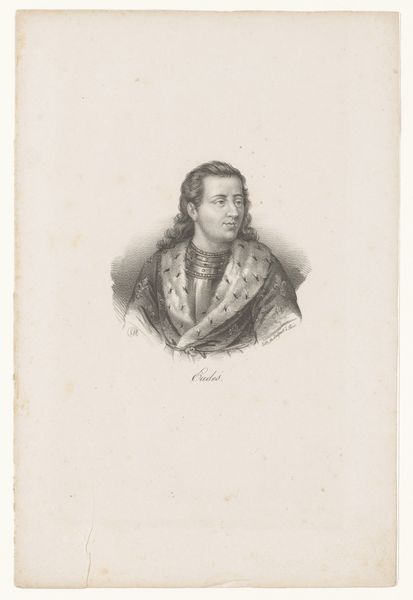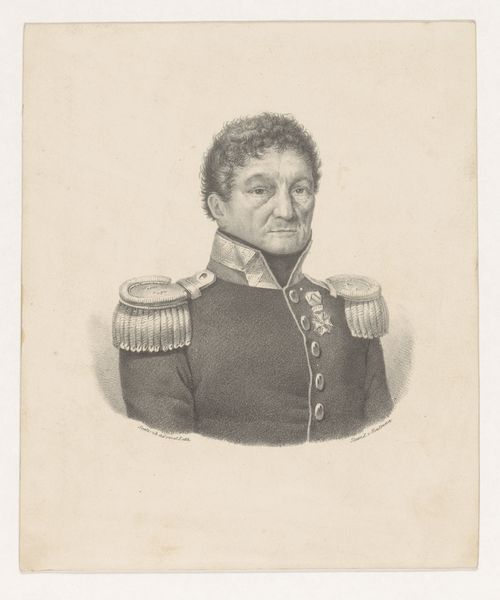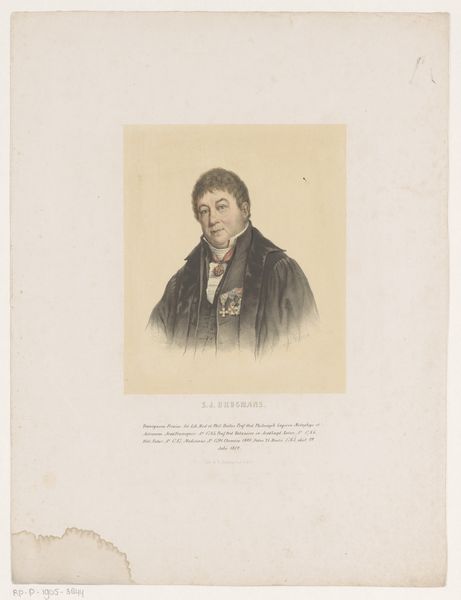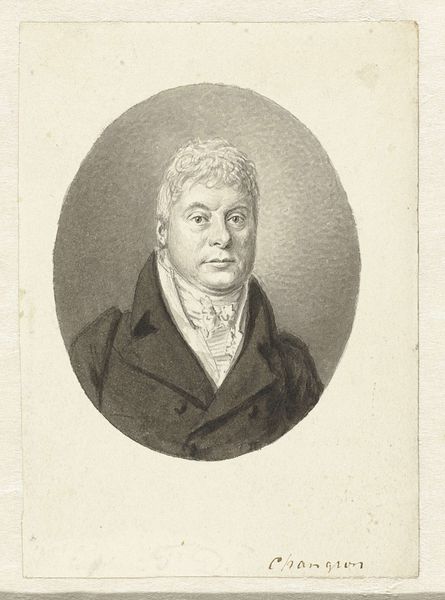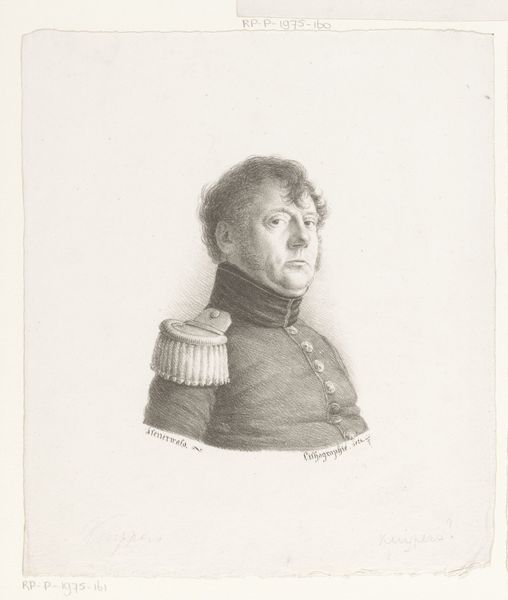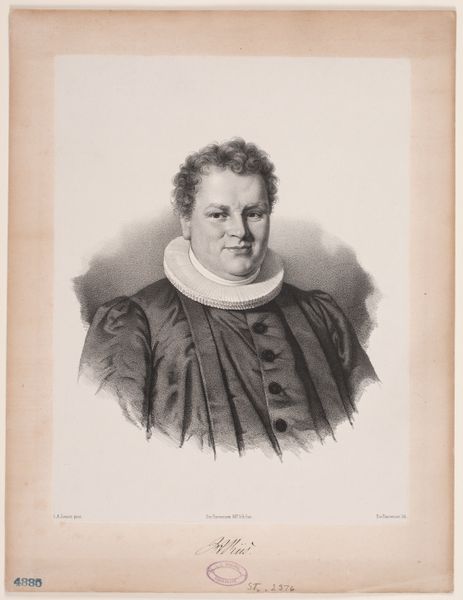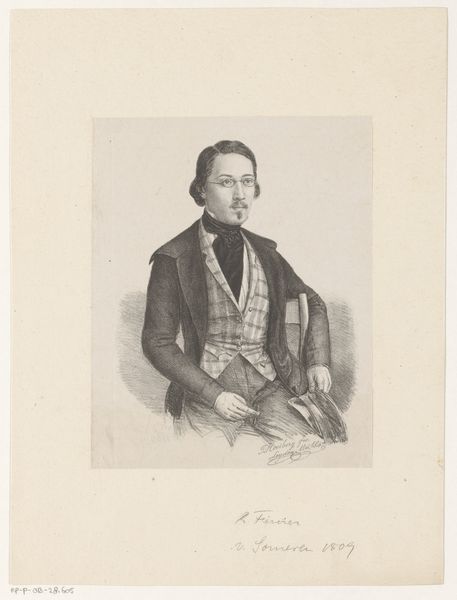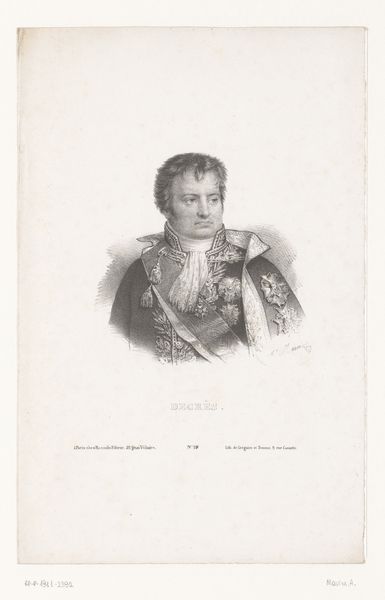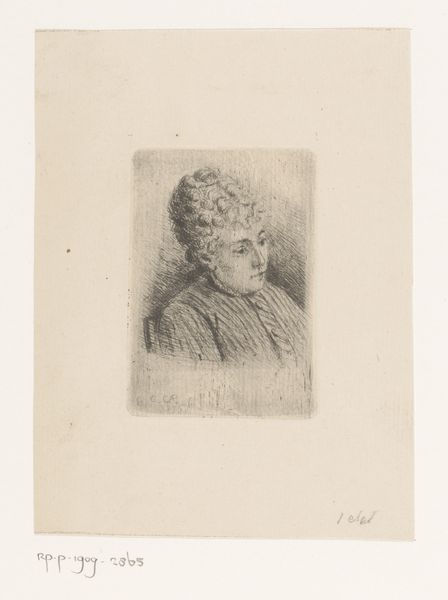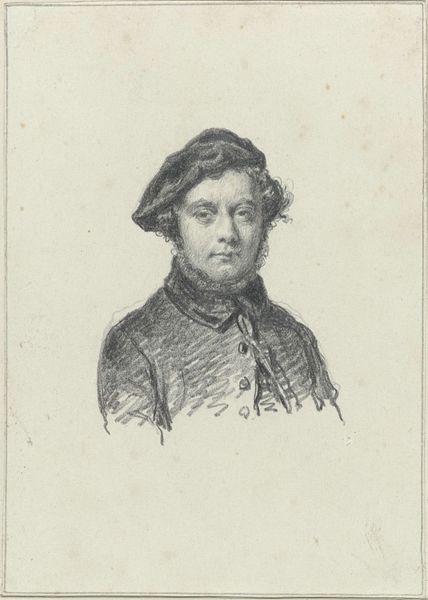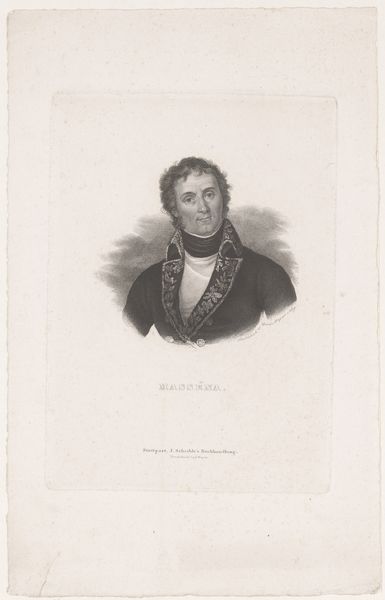
print, engraving
#
portrait
#
neoclacissism
# print
#
history-painting
#
engraving
Dimensions: height 244 mm, width 151 mm
Copyright: Rijks Museum: Open Domain
Curator: Here we have a print dating from sometime between 1797 and 1836; a portrait of Johan Melchior Kemper, crafted by Philippus Velijn, currently residing here at the Rijksmuseum. Editor: The visual impact is immediate – it's all about formality. The stern, composed demeanor really shines through even with the monochrome engraving. There is real strength in its simplicity. Curator: Indeed. Velijn situates Kemper, a prominent Dutch lawyer and professor, within a burgeoning sense of national identity, characteristic of the Neoclassical movement. Editor: Absolutely, and you see how cleverly the engraver has worked the light and shade. Look at the contrast between the crisp white collar and the heavier shadows defining his features. Curator: Notice also the medals he sports, symbols of state recognition, and integral to the political messaging of the period. This engraving served to broadcast the image of a loyal and honored servant of the state. Editor: And consider how that sense of order is reinforced by the use of clean lines, and careful placement of the figure against a stark backdrop. It draws the eye directly to the details that convey character and status. The artist wants us to understand the man through these selected visual cues. Curator: It is important to recall the print medium here. Reproductions such as these disseminated images of prominent citizens like Kemper, bolstering their influence beyond their immediate circles, a sort of early public relations! Editor: It is like a formal stage. The figure, centrally positioned, allows a deliberate control in conveying dignity. A technique mirroring the clarity valued in classical ideals. Curator: Indeed. Understanding the image this way connects art production to the evolving social structure and nation building endeavors prevalent at that time. Editor: Examining its form sharpens our insight into those cultural narratives and reveals the calculated aesthetic decisions aimed at shaping Kemper’s legacy and presence within Dutch society. Curator: I think we have uncovered not just an image of a man, but a glimpse into a fascinating moment of political image making! Editor: A neat combination of historical insight and close observation—illuminating both Kemper and the artist's intention.
Comments
No comments
Be the first to comment and join the conversation on the ultimate creative platform.
